Health Talk : Pyramiding and how to avoid it
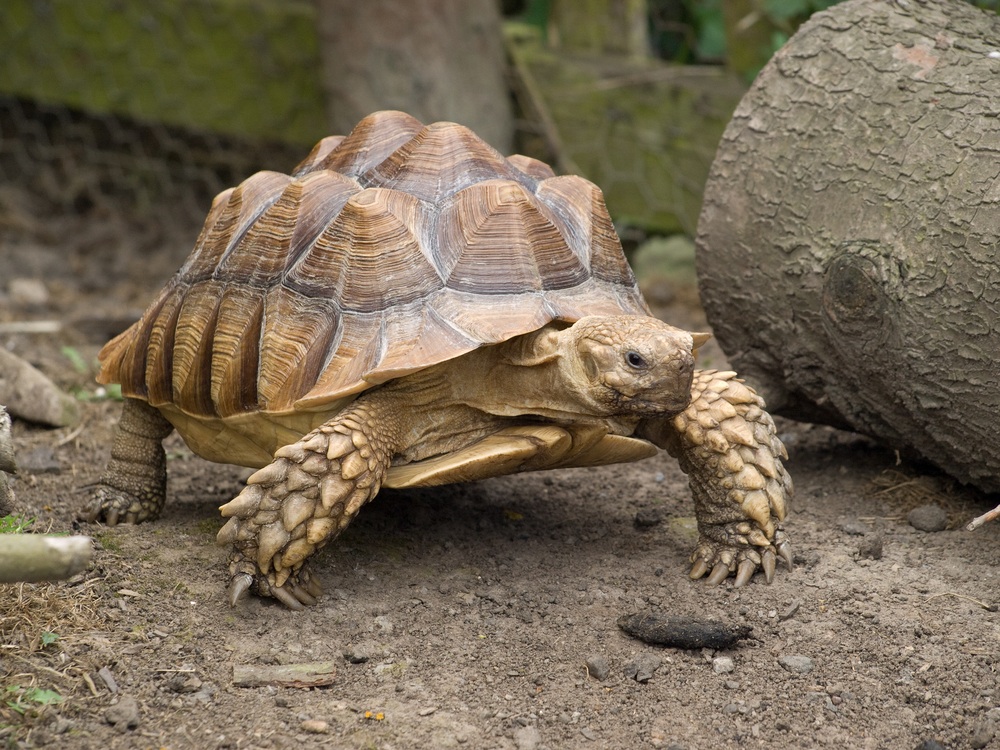
Pyramiding is a condition that has become much more prevalent since tortoises have started to be bred regularly, as it affects younger animals. There is no mistaking the signs of the problem. Instead of the shell appearing relatively smooth over the entire upper surface of the carapace, the individual sections called scutes become raised.
This applies particularly in the case of the vertebral scutes running down the centre of the shell, although it is not uncommon for adjacent lateral scutes to be raised as well. What is happening when pyramiding occurs is that the keratin which makes up the outer layer of the shell is being deposited abnormally over the bony framework beneath. (Compare the shells of these sulcata tortoises)
The degree and extend of this abnormal growth is quite variable. In more extreme cases, the scutes project well-above the surface of the shell itself, in the shape of miniature pyramids, accounting for the name of the condition. This may ultimately interfere with the tortoise's ability to mate, in the case of a female.
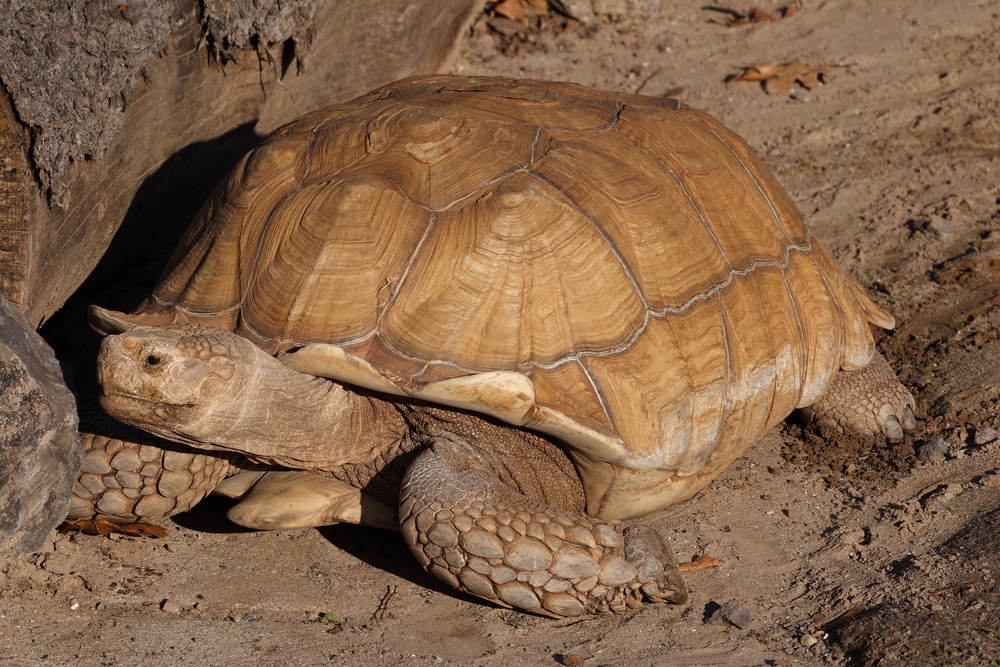
Scope of the problem
Back in the 1990s, young tortoises were often given cat or dog food, as a way of compensating for nutritional shortcomings in their food, with the aim of ensuring healthy shell growth. Before long, the increasing number of cases of pyramiding were soon being blamed on a diet containing excessive levels of protein.
Comparison of the habitat and dietary habits of two species commonly-affected by pyramiding
 Leopard tortoise : grassland, diet comprised of herbage and grass.
Leopard tortoise : grassland, diet comprised of herbage and grass.  Red-footed tortoise : tropical rain forest, varied diet including animal protein.
Red-footed tortoise : tropical rain forest, varied diet including animal protein. Further study now suggests that pyramiding is a more complex condition than previously thought, and may be the result of a variety of different nutritional and environmental factors. It is also worth pointing out that it does occur in tortoises in the wild as well, so it is is not entirely the result of lack of understanding with regard to husbandry. Indeed, it has also been suggested that some species, notably those with star-type patterning on their shells, may have a carapace which naturally grows in a raised fashion, to emphasise their markings.
Yet while red-footed tortoises are among those susceptible to pyramiding, others such as young African hingebacks (Kinixys species) are typically unaffected. The problem seems to be more manifest in species which attain a relatively large adult size. This is potentially significant in reaching an understanding of the condition, because young captive-bred tortoises grow significantly faster than their wild counterparts, thanks to the ready availability of food and favourable environmental conditions. In the wild for example, leopard tortoises often face periods of drought, when food would be harder to find and this slows their growth.
Food
Dietary factors may be an issue in some cases, and today, many breeders refuse to recommend formulated tortoise foods, fearing that these could be too high in protein. Certainly, tortoises are foragers, seeking plant matter that has a generally low nutritional value. This is why they have to eat a lot of it, in order to meet their energy requirements, with bulk and fibre being significant in their diet. They are not equipped to eat concentrated, high-energy rations, although forest species will actively seek out sources of protein on occasions.
There may also be an imbalance in the critical calcium : phosphorous ratio in the tortoise's diet which can affect its skeletal structure. This ought to be 2 : 1 in favour of calcium, but their food often contains too little of this vital mineral. Furthermore, if the tortoise does not have the opportunity to bask under a suitable light, or alternatively is not given a vitamin supplement, it will inevitably end up suffering from a deficiency of vitamin D₃. This vitamin is crucial in maintaining a healthy balance between calcium and phosphorus in the body.
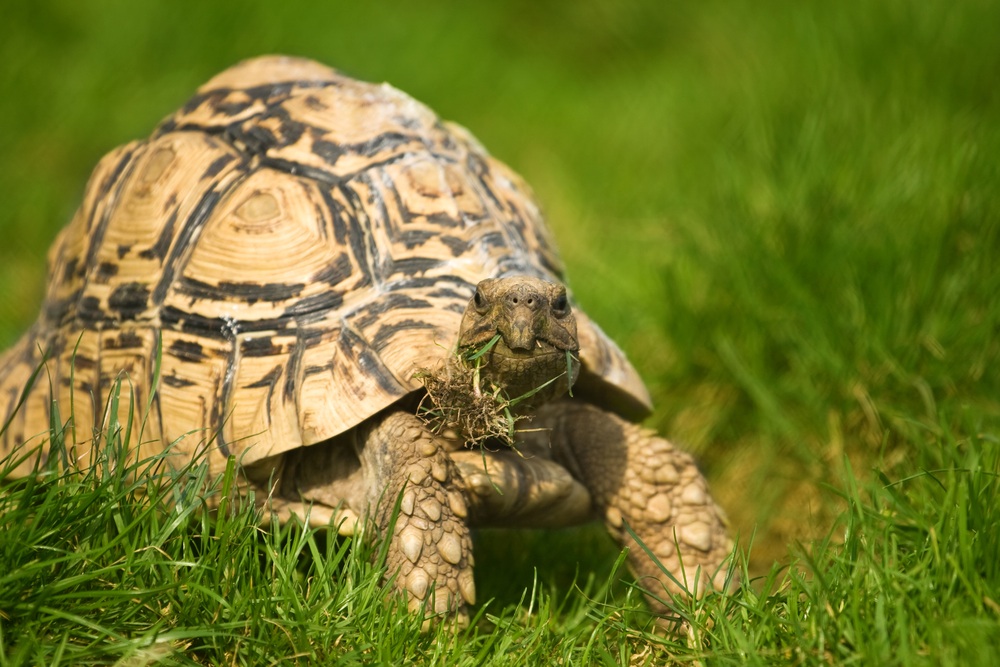
Supplements in any case need to be used with care. It is not always appreciated that such products are concentrated, and are likely to be harmful if a tortoise receives excessive amounts. As an example, should a tortoise have regular access to sunlight or you are using a full spectrum light with UVB, both of which allow vitamin D₃ to be manufactured naturally in the body, then adding further quantities of this vitamin to its diet can easily cause problems over time, as it is stored in the liver.
Excessive use of calcium powder on the food can interfere with the absorption of other key minerals and may trigger bladder stones, particularly if the tortoises is unable to drink freely. It is better to provide cuttlebone (as sold more commonly in pet shops for budgerigars) and break off a piece which your tortoise can nibble on as required, if it needs more calcium for any reason, such as egg-laying. Don't assume that providing excessive amounts of calcium powder regularly on its food will be beneficial.
Environment
While much of the focus as far as pyramiding is concerned has been concentrated on dietary causes, environmental factors are significant too. Personally, I think one of the least appreciated in this debate is humidity. Think about the way in which most young tortoises are kept in this country. They are housed indoors under a heat source which dries the atmosphere. Contrast this with the situation in the wild where a tropical species such as the red-footed tortoise (Geochelone carbonaria) is subjected to having its shell regularly soaked, either by rain or as the result of moving through damp vegetation. Even leopard tortoises (Geochelone pardalis) (see picture) face regular downpours, particularly during the wet season.
There is also the actual behaviour of the young tortoises themselves to consider, because they are relatively shy and nervous as hatchlings. They will hide away, in undergrowth where not only may the temperature be cooler, but the relative humidity will be higher. Hides should therefore always be supplied to young tortoises, and rather just placing them in a shallow bath two or three times each week, tepid water should actually be sprayed over the shell, which can also be wiped over on alternate days with damp paper towel.
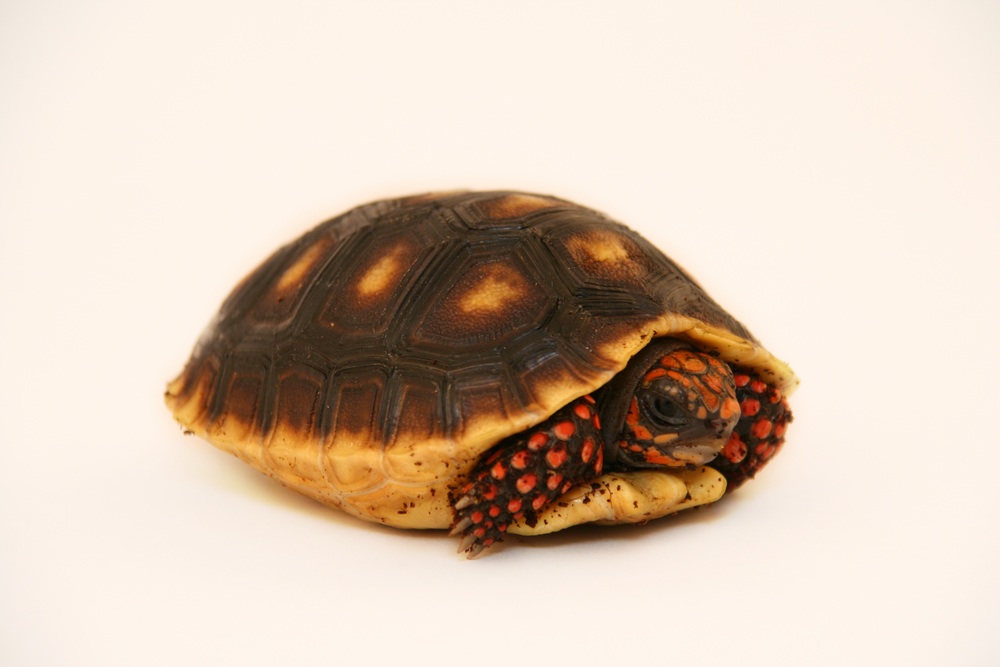
The effect of humidity as far as pyramiding is concerned has been studied in the USA, with hatching red-footed tortoises (see left). One group was housed in a set-up which had a retreat lined simply with dry paper towels, whereas another were kept and fed in an identical fashion, except for the fact that the toweling in their retreat was always damp.
The findings are fascinating. Those red-foots which had been reared with the damp towels showed no pyramiding, whereas the first group did display this shell abnormality. Further work was then undertaken and published by the University of Veterinary Medicine in Vienna, involving sulcata tortoises. Their research suggested that actually, the protein level of the diet had little effect on pyramiding. This is not entirely unexpected, as the condition also develops in both red-foots and leopard tortoises, which naturally are reared on different types of food, suggesting there is not a clear nutritional link.
But the scientists did discover the tortoises' feeding behaviour itself was significant. Under normal circumstances, when the humidity is relatively high, so food is plentiful as the rains will have triggered the growth of vegetation in the tortoise's habitat. Leopards naturally tend not to eat when the weather is dry, as there is little food available and so they do not grow at this stage. But young captive-bred tortoises in collections will continue eating, even when the humidity is low.
The Austrian research suggests that the soft cartilage around the areas where bone is growing then simply collapses. It becomes ossified in this abnormal position, and it is the bone deposition here that ultimately results in the distortion of the shell above. This may also help to explain why young tortoises, which are growing faster in their first year or two of life are especially susceptible to pyramiding, compared with older individuals.
How to prevent pyramiding
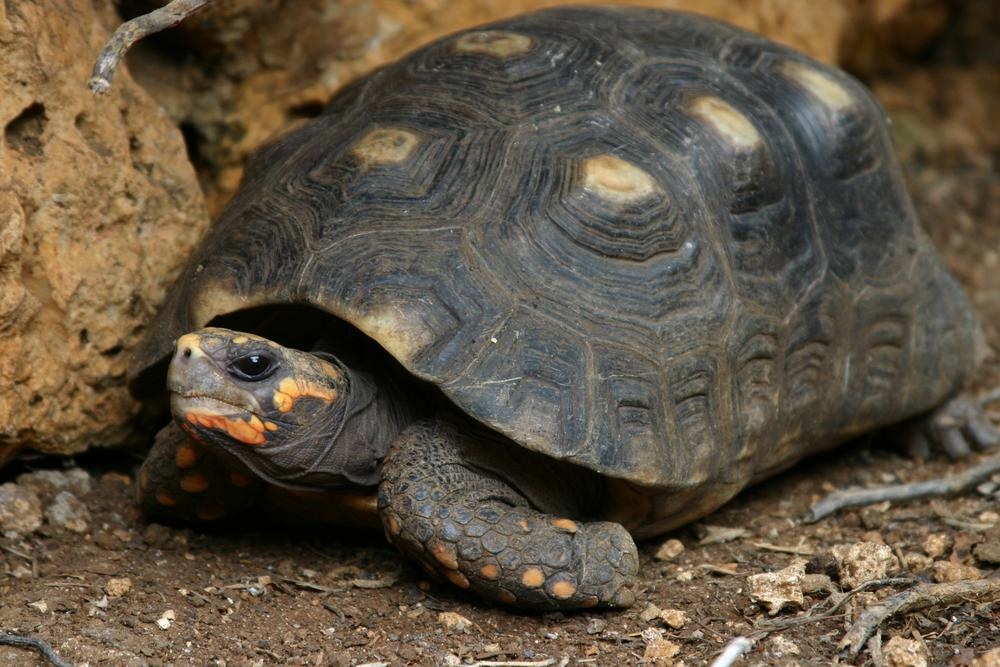
It makes sense to feed a varied diet, and ideally, allow your tortoise to manufacture its own Vitamin D₃ under the influence of sunlight, as well as supplying a separate source of calcium in the form of cuttlebone. Follow the instructions for using supplements very carefully, and do not exceed the recommended requirements, choosing the most suitable for your tortoise's circumstances.
Most importantly however, spray and/or wipe the young tortoise's shell regularly. A damp area will also help, and especially for red-footed tortoises, as well as their yellow-footed cousin (G. denticulata), using a substrate such as a peat or a suitable safe substitute, which holds moisture and yet does not allow bacteria and other harmful microbes to multiply rapidly in the enclosure is to be recommended.
Unfortunately, once the signs of pyramiding have become apparent, they will be impossible to correct, but even then, following this advice should help to prevent the situation from worsening significantly in the case of a young tortoise. Normal shell growth in the case of an adult red-foot can be seen above.